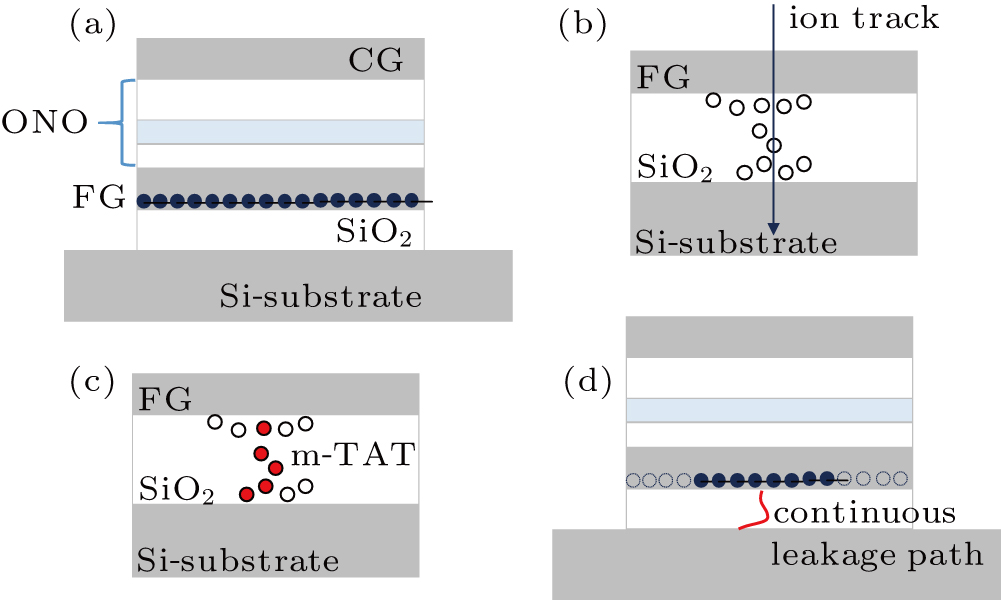Heavy ion induced upset errors in 90-nm 64 Mb NOR-type floating-gate Flash memory
Project supported by the National Natural Science Foundation of China (Grant No. 616340084), the Youth Innovation Promotion Association of CAS (Grant No. 2014101), the International Cooperation Project of CAS, and the Austrian-Chinese Cooperative R&D Projects (Grant No. 172511KYSB20150006).
(color online) Radiation-induced conductive path in the tunneling oxide of the FG cell. (a) FG cell after programming. (b) Impinging heavy ion creates physical damage in the tunneling oxide. Electrons stored in the FG are not shown. (c) Holes are trapped to form electrically active defects (EADs). RILC occurs with the help of EADs, through the multi-trap-assisted tunneling (m-TAT) mechanism. Electrons stored in the FG are not shown. (d) RILC progressively discharges the programmed FG cell.
